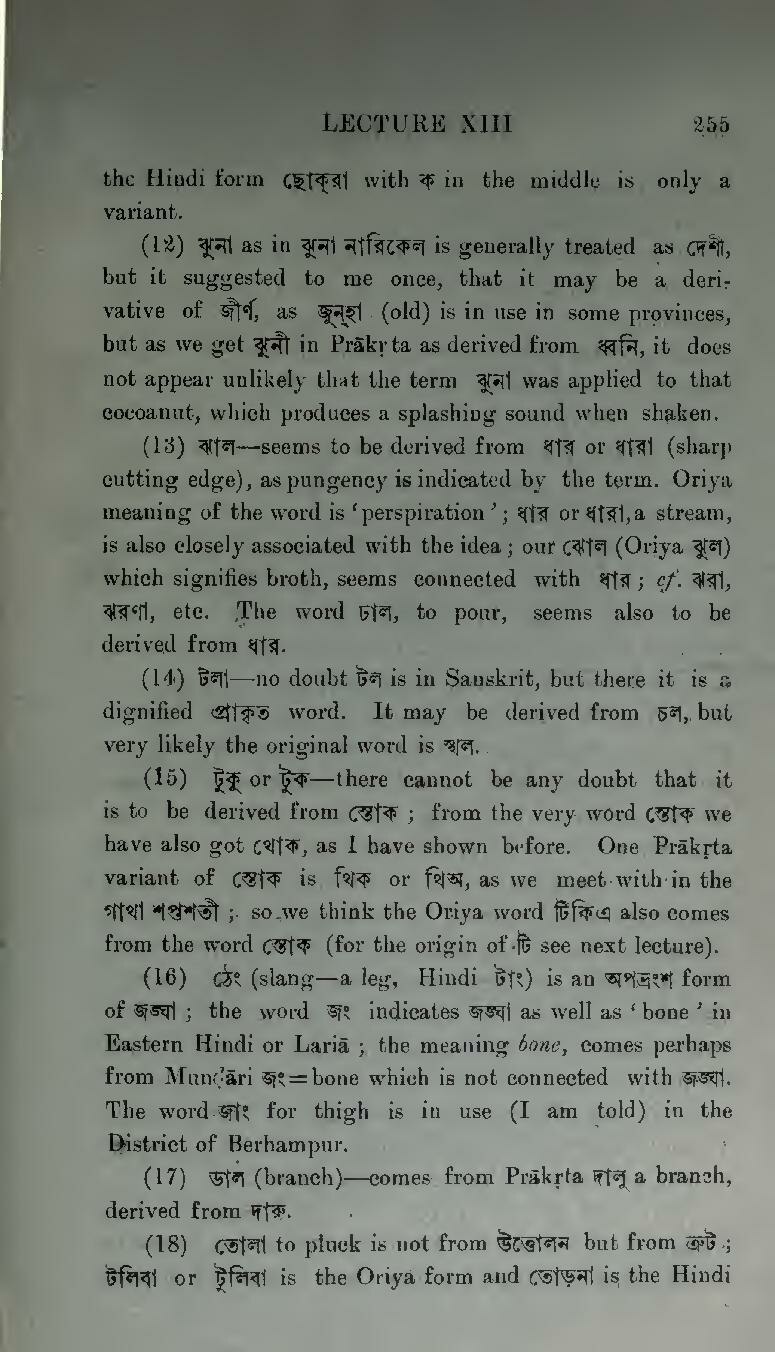the Hindi form ছোক্রা with ক in the middle is only a variant.
(12) ঝুনা as in ঝুনা নারিকেল is generally treated as দেশী, but it suggested to me once, that it may be a derivative of জীর্ণ, as জুন্হা (old) is in use in some provinces, but as we get ঝুনী in Prākṛta as derived from ধ্বনি, it does not appear unlikely that the term ঝুনা was applied to that cocoanut, which produces a splashing sound when shaken.
(13) ঝাল—seems to be derived from ধার or ধারা (sharp cutting edge), as pungency is indicated by the term. Oriya meaning of the word is 'perspiration'; ধার or ধারা, a stream, is also closely associated with the idea; our ঝোল (Oriya ঝুল) which signifies broth, seems connected with ধার; cf. ঝরা, ঝরণা, etc. The word ঢাল, to pour, seems also to be derived from ধার.
(14) টলা—no doubt টল is in Sanskrit, but there it is a dignified প্রাকৃত word. It may be derived from চল, but very likely the original word is স্খল.
(15) টুকু or টুক—there cannot be any doubt that it is to be derived from স্তোক; from the very word স্তোক we have also got থোক, as I have shown before. One Prākṛta variant of স্তোক is থিক or থিঅ, as we meet with in the গাথা সপ্তশতী; so,we think the Oriya word টিকিএ also comes from the word স্তোক (for the origin of টি see next lecture).
(16) ঠেং (slang—a leg, Hindi টাং) is an অপভ্রংশ form of জঙ্ঘা; the word জং indicates জঙ্ঘা as well as 'bone' in Eastern Hindi or Lariā; the meaning bone, comes perhaps from Muṇḍāri জং = bone which is not connected with জঙ্ঘা. The word জাং for thigh is in use (I am told) in the District of Berhampur.
(17) ডাল (branch)—comes from Prākṛta দালু a branch, derived from দারু.
(18) তোলা to pluck is not from উত্তোলন but from ত্রুট; টলিবা or টুলিবা is the Oriya form and তোড়না is the Hindi
